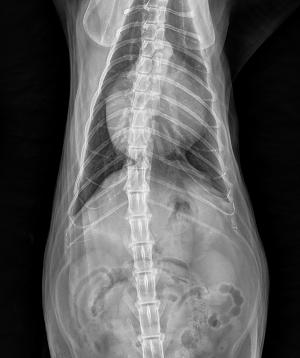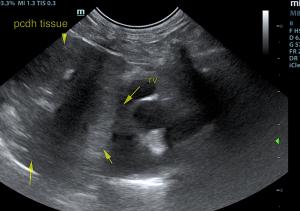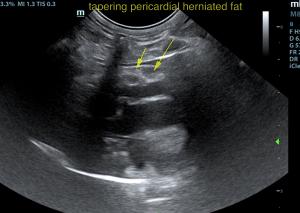Wait, that's not supposed to be there...
Working in mobile ultrasound, you just NEVER know what you're going to see!
January's Case of the Month had quite an interesting presentation. Imaging was performed by technician Amanda Lacey, SDEP™ Certified Sonographer of Animal Sounds NW in Oregon. Her thoroughness, flexibility and problem-solving skills helped this patient get a quick diagnosis.
When Cardiomegaly is not 'Cardiomegaly' what do you do?
After following the SDEP™ Echo 7pt. protocol, go back to the 'not normal regions' and image from multiple different angles, put color on it, reposition the pet, and when you are still stumped, you phone a friend.
After checking images on the SonoPath clinical search for suspected hernia, Amanda decided to reach out to SonoPath specialist, Dr. Mac Daniel, DVM, DABVP, for some input on the next best step.........an Abdominal Ultrasound.
Taking a look into the abdomen helped put the clinical picture altogether resulting in a diagnosis.
Special thanks to Dr. Yuko Eguchi-Coe of West Hills Animal Hospital, Corvallis, Oregon,for allowing ASNW to be part of this patient’s diagnostic work up.
DX
Pericardial diaphragmatic hernia - thoracic herniation of the liver - thoracic and pericardial herniation of the falciform fat. Enlarged spleen.
Outcome
If respiratory distress under exercise is an issue then this is likely owing to pericardial diaphragmatic hernia and lack of adequate oxygenation of the lung fields owing to the herniation. However, many patients live normally with this type of hernia over a number of years. Therefore, other source of lethargy such as infectious disease, orthopedic disease, general inflammation or possible splenic related disease should be considered. The splenic enlargement is not explainable. Given the size of 1.4 cm, ultrasound-guided FNA would be indicated especially if any weight loss is present. Surgical consultation could be considered. However, it is debatable on whether surgery is absolutely necessary in this patient.








Comments
Currently, the patient is stable and treatment options are being explored.